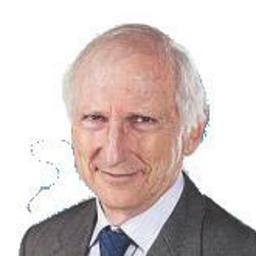The science behind building client loyalty

By Bob Murray
Dr Bob Murray explains how law firms can make their client relationships 'really sticky'
The managing partner of a silver circle firm lamented to me that ‘increasingly, clients are interested in partners. Not the firms they work at.’ Over the last year his firm had lost a lot of rainmaking partners to other outfits, resulting in considerable problems and lost revenue.
The dream shared by every managing partner we’ve ever worked with is simple: to have loyal clients who will stick with the firm through thick and thin and not to particular partners who are prone to fly the coop at any moment.
From a neuro-genetic point of view, a ‘sticky’ relationship is one where both parties would suffer emotional pain if it ended. The object of the exercise for every firm, then, is to become so much a part of the client’s support network that it is almost inconceivable for them to leave.
Today, there are few such clients. The reason is that few firms make the relationship really sticky. That’s unfortunate, because humans are wired to form strong attachments and someone must do something psychologically wrong to derail them.
Our relationship world is sharply divided between those we feel support us and those that don’t. Support and non-support equate in the brain with ‘safety’ and ‘danger’. The excuse a client uses to leave may be that the partner they work with has jumped ship. But that’s probably not the real reason, which may be that the firm is not seen as a vital part of their support network.
This feeling of support lies in the workings of two of the oldest parts of the brain – the amygdala and the striatum. The amygdala is the brain’s gatekeeper. Virtually all input that comes into the brain goes through it. Its job is to decide whether you’re safe or not. If it perceives danger it signals the activation of the flight, fight, or freeze response. You know it’s been triggered when clients postpone meetings (flight), argue unreasonably over a bill (fight), or simply become uncooperative (freeze).
The next hurdle in creating or maintaining a relationship is the striatum. It has three tests you must pass:
Can you be trusted? If a client doesn’t trust you there can be no relationship.
Are you a potential member of the tribe? For the client to collaborate with you then you must have enough in common for the brain to see a ‘tribal’ connection.
- Can you meet each other’s needs? Every relationship is based on the mutual satisfaction of needs. Lawyers are usually good at finding out their client’s needs, but often bad at stating their own. This lack of mutuality can lead to a psychologically shaky relationship.
Tribe membership
Firms are becoming besotted with technology in a desperate attempt to give clients the ‘reduced cost’ service they demand. There is a race to the bottom where firms become little more than software and interactions become digital. Everything becomes a commodity with no emotional attachment.
To be sticky, firms must reorient themselves to be ‘relationship centric’. The firm/client relationship is most meaningful in terms of the bonds the client forms with all contacts they make at the firm. Supportive interactions help to solidify the bond.
Lisa McDonald, business and marketing director for HopgoodGanim, has a great phrase for this bonding process: ‘falling in love’. ‘We have been told by clients that everyone in the firm from the mailroom up is amazing to work with. They say they fall in love with the firm.’
By using the natural human drives for tribe and belonging, a smart managing partner can create the attachment which will turn a transactional connection into an enduring bond. This sense of belonging creates the emotional attachment to our tribes. In neurochemical terms, we ‘fall in love’.
Human groupings also usually have a ‘council of elders’ to whom we naturally turn for advice. These may be elder statesmen, grandparents, or law firm partners.
‘A firm that can be a council of elders to whom a client turns for advice is in a very powerful position,’ says Ian Humphreys, managing partner of Ashurst in Queensland. ‘I see myself as an adviser in this broader sense of the word. Clients can, and do, come to me for advice which is not necessarily legal. I can give insight. For a firm to be a council of elders, lawyers and partners must be able to be more general advisers. The firm must be in the business of insight.’
The more clients rely on their legal advisers to give them insight, the stickier they will be. It’s another essential part of bringing clients into the tribe.
Dr Bob Murray is co-founder of Fortinberry Murray and the co-author of Leading the Future: The Human Science of Law Firm Strategy and Leadership
fortinberrymurray.com
